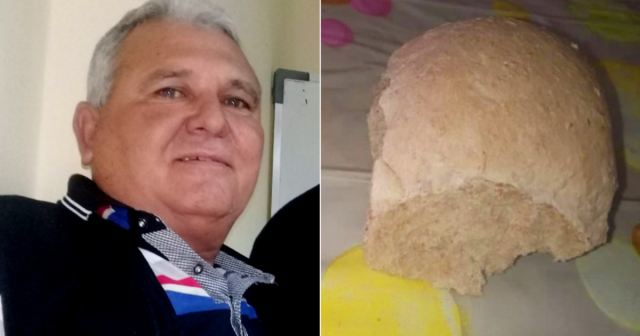A Cuban shared on the Internet photos of the bread he gets for the regulated quota along with one he bought at a private bakery, and the differences were evident.
The Twitter user identified as Nicanor O'donnell showed the two loaves. The one in the private business is almost twice the size of the winery, its color is much lighter and in general it has a much more appetizing appearance.
"Good morning in the morning. Here is a sample of two breads, the one from the winery (which we have been without bread for two days) and the one from a private bakery with flour imported by MSMEs (with a high price, but not lacking, approx. 40 pesos).
Several Internet users commented and pointed out that in many places the bread in the quota is even smaller and of poorer quality.
One even suggested that the government should not waste time and resources making bread, and that the best thing would be to privatize all the bakeries and facilitate the production of raw materials, so that the productivity and quality of the bread increases.
"Yes, everything that was nationalized 60 years ago, the 'miracle project' that was a failure," recalled the author of the post.
Last SaturdayThe few reserves of wheat flour to make bread were exhausted in Cuba, a situation that deprived a good part of the population of basic bread.
On Sunday, aship from Europe docked in the port of Havana with a cargo of 21 thousand tons of wheat, which will barely guarantee coverage for around 12 days to satisfy the demand for bread in the country.
This flour shortage, in a context of growing inflation, caused a huge increase in the price of bread in the Matanzas municipality of Cárdenas.
A resident identified on social networks as Mayito Rivero, reported thata loaf of bread already costs 150 pesos, a price that increased on the same day of purchase at the same point of sale.
"Friends from the neighborhood, I'm probating with me, in the morning I buy this loaf of bread, 130 CUP and in the afternoon I buy another one and you know what? 150, and that's on the same day," he said on Facebook, where he wondered how much It will cost the next day.
This situation has generated criticism among citizens, who must pay high prices for a product without quality and made with cassava flour, banana or other formulas, due to the lack of its main component.
At the end of May, the Provincial Food Industry Company (EPIA) announced that theBread in Havana will be produced with durum wheat semolina combined with wheat flour.
"The traditional bread produced until now with 100% refined wheat flour will begin to be produced and marketed based on the availability of durum (hard) wheat semolina," the company reported.
To do this, they will use 40% semolina and 60% "traditional" flour, said the directors of the entity, also arguing that durum wheat semolina is low in sodium content, rich in vitamins B3, B4 and B9, and improves the cooking and appearance of the finished product.
What do you think?
COMMENTFiled in:
